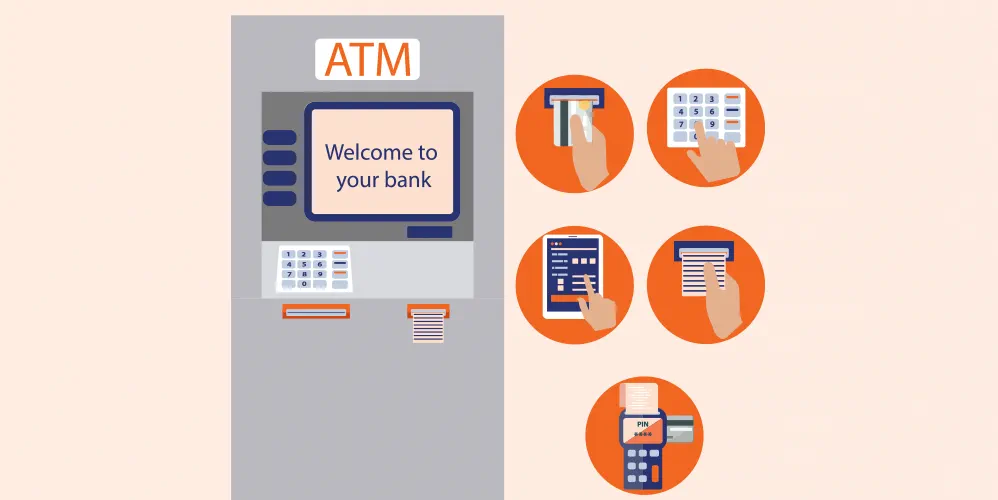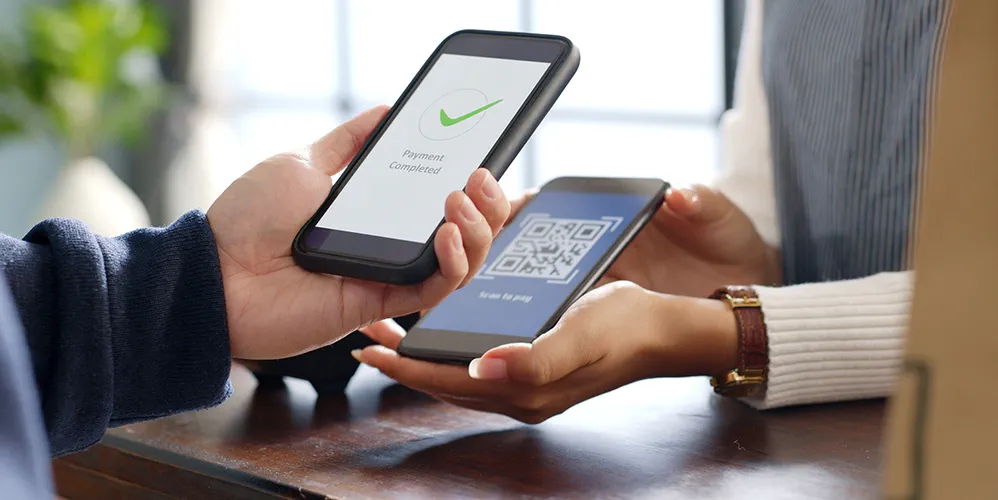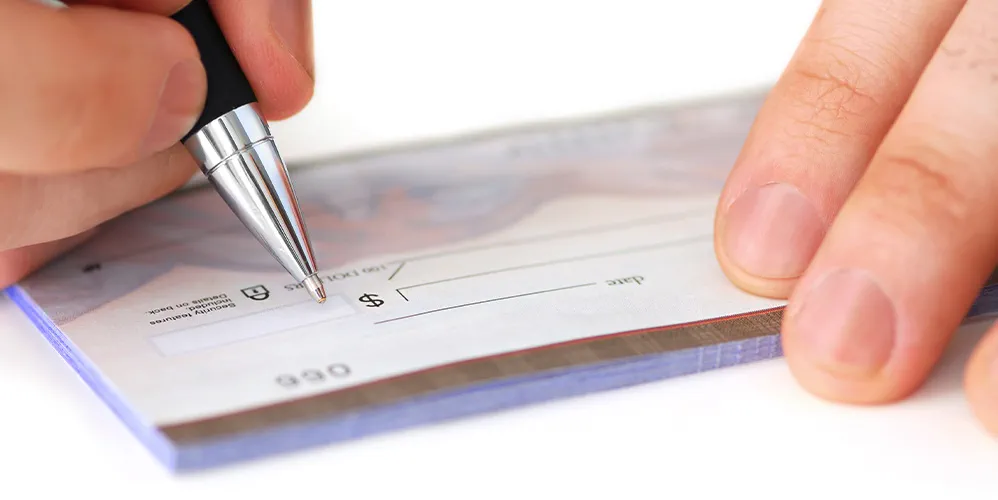
From PINs to Receipts: Everything You Need to Know About Withdrawing Money from ATMs
24 Nov 2023

Table of Content
In today's fast-paced world, Automated Teller Machines (ATMs) have become an integral part of our daily lives. These convenient machines allow us to access our hard-earned money quickly and easily, making financial transactions a breeze. Whether you're in a hurry, travelling, or simply prefer the convenience, understanding how to withdraw money from an ATM is an essential skill. In this blog, we'll take a comprehensive look at the process, security tips, alternative options, and the pros and cons associated with using ATMs.
How to Withdraw Money from an ATM First Time
Step-by-step Guide:
- Locate an ATM: Begin by finding a nearby ATM that is affiliated with your bank or financial institution. This can easily be done by checking your bank's website, mobile app, or using online directories.
- Insert Your ATM Card: Once you've reached the ATM, insert your ATM card into the designated slot. Ensure that the card is inserted with the magnetic strip facing down and in the correct orientation.
- Enter Your PIN: The next step involves entering your Personal Identification Number (PIN). Carefully type in your four or six-digit PIN using the keypad provided. Be mindful of your surroundings and shield your PIN entry to prevent unauthorized access.
- Select "Withdrawal" Option: After entering your PIN, the ATM screen will present various options. Choose the "Withdrawal" or "Cash Withdrawal" option.
- Specify the Amount: Select the desired amount you wish to withdraw from the available options or manually enter the exact amount using the keypad. Double-check the amount to avoid any mistakes.
- Choose the Account: If you have multiple accounts linked to your ATM card, the next step is to select the specific account through which you want to withdraw money.
- Wait for Processing: Once you've confirmed the withdrawal amount and the chosen account, the ATM will process your request. This might take a few seconds, so be patient.
- Collect Your Cash: Once the transaction is processed, the ATM will dispense the requested amount in cash. Be prompt in collecting your cash and any receipts that may be provided.
- Take Your Card and Receipt: Once you've collected your cash, the ATM will return your card. Remember to take your card and any receipts with you before leaving the machine.
Also Read: Check How to withdraw cash from UPI ATM
Security Tips for Withdrawing Money
While using ATMs, it's crucial to prioritize your safety and protect your personal information. Here are some essential security tips to keep in mind:
- Choose a Secure Location: Opt for ATMs that are located in well-lit and populated areas. Avoid using machines that appear suspicious or tampered with.
- Be Aware of Your Surroundings: Before approaching an ATM, survey the area for any suspicious individuals or activities. If you notice anything unusual, it's best to find another ATM or return at a later time.
- Shield Your PIN: When entering your PIN, use your body or hand to cover the keypad to prevent others from seeing your digits. This simple action can significantly reduce the risk of PIN theft.
- Regularly Change Your PIN: To enhance security, change your PIN regularly and avoid using easily guessable numbers like birthdates or consecutive digits.
- Beware of Skimming Devices: Inspect the ATM for any unusual attachments or devices that may be used to steal card information. If anything seems out of the ordinary, report it to the respective bank or authorities.
Also Read: Simple Steps for PIN Generation at ATM
Types of ATM Cards and PINs
ATM cards come in various types, depending on the services they offer and the financial institution that issues them. Some common types include debit cards , credit cards with ATM access, and prepaid cards.
Each card type has its specific features and limitations, so it's essential to understand your card's functionalities and associated fees.
Similarly, the Personal Identification Number (PIN) is a unique code that verifies your identity and allows access to your funds. Ensure that your PIN is kept confidential and not shared with anyone, as it acts as the primary security measure for ATM transactions.
Alternatives to Using ATMs
While ATMs provide convenient access to cash, there are alternative options available for withdrawing money:
- Bank Branches: Visit your bank's local branch and request a withdrawal from a teller. This option allows for face-to-face interaction and additional assistance if needed.
- Cashback at Retail Stores: Many retail stores offer cashback options when making a purchase with a debit card. This allows you to withdraw cash without an ATM transaction fee.
Also Read: Decoding ATM: Full Form, Meaning, and Usage Explained
Pros and Cons of Withdrawing Money from an ATM
Pros:
- Convenience: ATMs are available 24/7, providing quick access to cash whenever needed.
- Accessibility: With ATMs located in various locations, you can withdraw money even while traveling or away from your local bank branch.
- Speed: ATM transactions are typically swift, allowing you to complete your withdrawal within minutes.
Cons:
- Transaction Fees: Depending on your bank and account type, ATM transactions may incur fees, especially for using out-of-network machines.
- Limited Cash Availability: Some ATMs have withdrawal limits, meaning you may need to make multiple transactions or visit a bank branch for larger amounts.
- Security Risks: ATMs can be targets for fraudsters and skimming devices, making it crucial to be vigilant and take appropriate security measures.
Conclusion
Knowing how to withdraw money from an ATM is a fundamental skill in managing your finances. By following a simple step-by-step process, prioritizing security, and understanding the various card types and PINs, you can confidently navigate the world of ATMs. While ATMs provide convenience and accessibility, it's important to weigh the pros and cons, considering alternative options when necessary. Remember to prioritize your safety, keep your PIN confidential, and remain vigilant during ATM transactions. With these insights and precautions in mind, you can make the most of ATMs and their role in your financial journey.
Withdraw money anytime by finding a 24-hour ATM nearby to get cash at your convenience.
Popular Articles
Tag Clouds
Related Articles



What is CVV on a Debit Card? Understanding Its Importance and Security Features


How to Update Your FASTag KYC: Step-by-Step Guide for Online & Offline Methods




The Importance of Pension Funds: Secure Your Future with Steady Retirement Income

-
Disclaimer
The contents of this article/infographic/picture/video are meant solely for information purposes and do not necessarily reflect the views of Bank of Baroda. The contents are generic in nature and for informational purposes only. It is not a substitute for specific advice in your own circumstances. Bank of Baroda and/ or its Affiliates and its subsidiaries make no representation as to the accuracy; completeness or reliability of any information contained herein or otherwise provided and hereby disclaim any liability with regard to the same. The information is subject to updation, completion, revision, verification and amendment and the same may change materially. The information is not intended for distribution or use by any person in any jurisdiction where such distribution or use would be contrary to law or regulation or would subject Bank of Baroda or its affiliates to any licensing or registration requirements. Bank of Baroda shall not be responsible for any direct/indirect loss or liability incurred by the reader for taking any financial decisions based on the contents and information mentioned. Please consult your financial advisor before making any financial decision.
Easy as 1-2-3: How to Deposit Cash Through an ATM
Learn how to securely deposit cash at an ATM with Bank of Baroda. Follow our step-by-step guide to ensure a hassle-free experience. Start today and safely deposit your money through an ATM.
Decoding ATM: Full Form, Meaning, and Usage Explained
What is an ATM? Discover the full form, meaning, history, functionality, and benefits of ATMs with Bank of Baroda. Learn how to use an ATM, explore its evolution & its significance in the banking industry.

